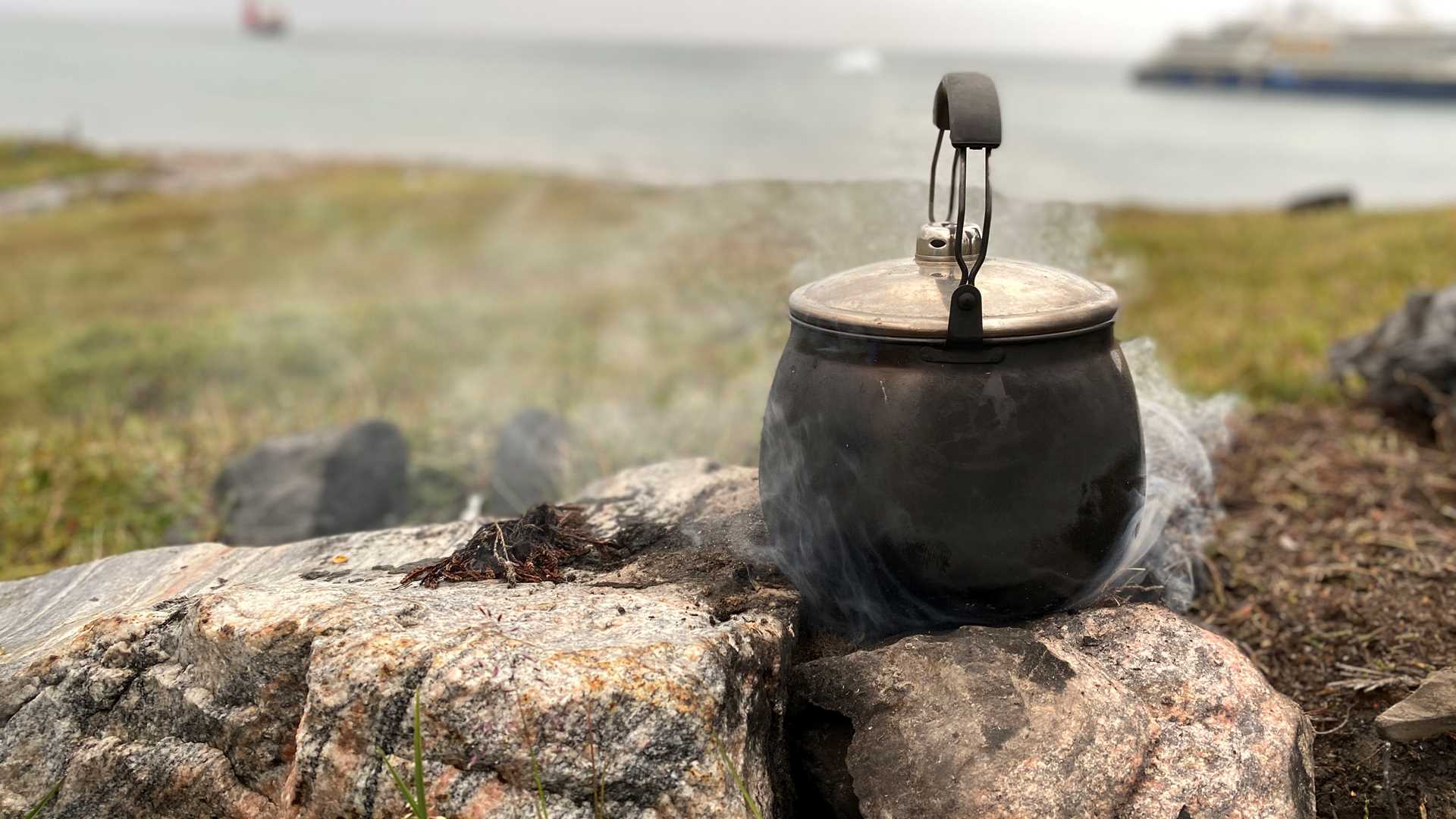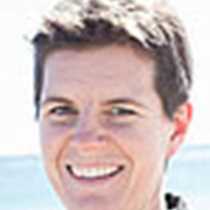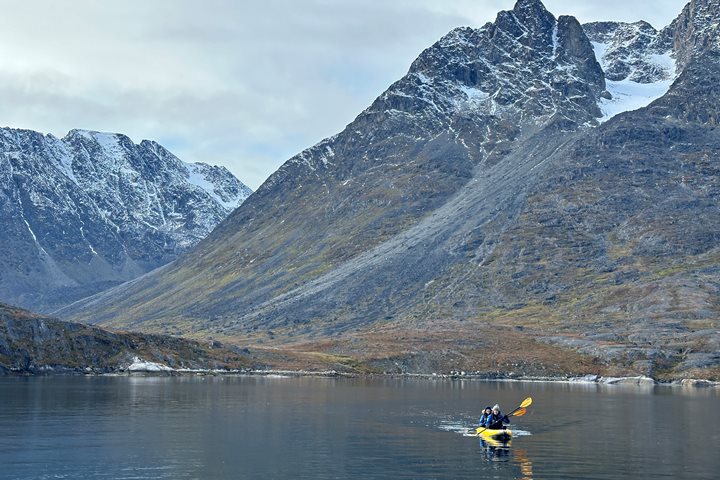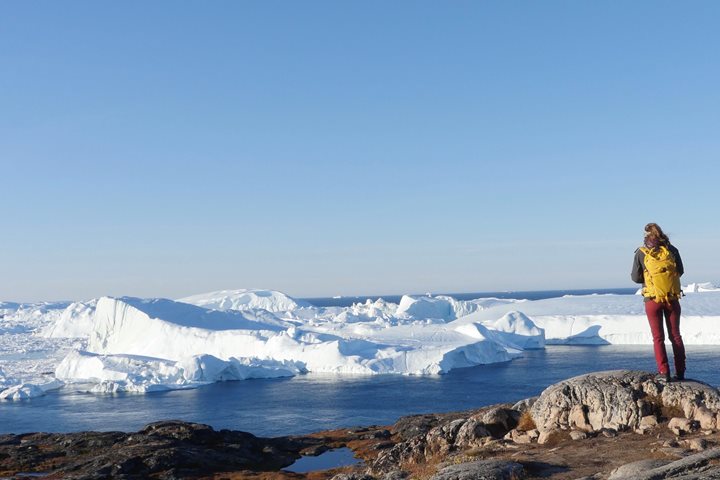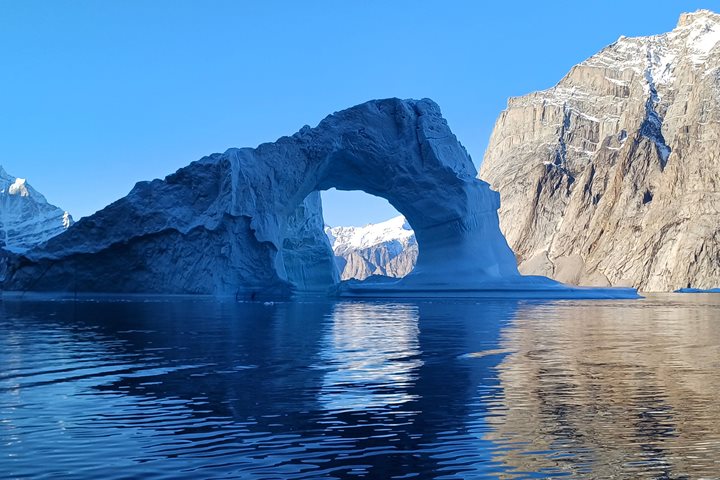After several days of exploring quiet bays, glacial valleys, and the edge of the sea ice, it was a delightful change of pace to spend this morning in the hamlet of Pond Inlet, Nunavut. The largest community on north Baffin Island and the High Canadian Arctic, Pond Inlet has about 1,700 residents, nearly a quarter of which are school-aged children. Local guides shared insights into life driven by a polar climate, highly dynamic sea ice, and resources (food, building supplies, household goods, etc.) delivered once or twice per year via cargo ship. We were privileged to hear about the guides’ family history here and their continued connection to the land.
At the Pond Inlet Community Center, we were invited to demonstrations that included traditional games, dances, and songs. The Arctic Winter Games, first held in 1970 in Yellowknife, Canada and now drawing teams from Nunavut and across the circumpolar region, feature sporting events as well as skills competitions. The one-foot-high kick, two-foot-high kick, one-hand reach, finger pull, muskoxen push, and more were all showcased, each serving to keep an individual tough and agile to improve survival in the challenging Arctic environment. Our hosts also performed drum dances in several styles, throat singing, and songs learned from community elders. This was made even more fun by the youth, who clearly enjoyed sharing their talents and heritage.
We cruised into Kangiqługaapik Fjord (Erik Harbour) this afternoon, a previously unvisited location for National Geographic Endurance. Spectacular, glacially-carved landforms surrounded us. Silt-laden runoff created a sharp boundary where it met clear Baffin Bay water, and two sandhill cranes were spotted amongst a group of gulls on the shoreline. Navigating the weather and ice overnight, we hope to reach a new area of Eastern Canada tomorrow, extending our voyage even farther north.

